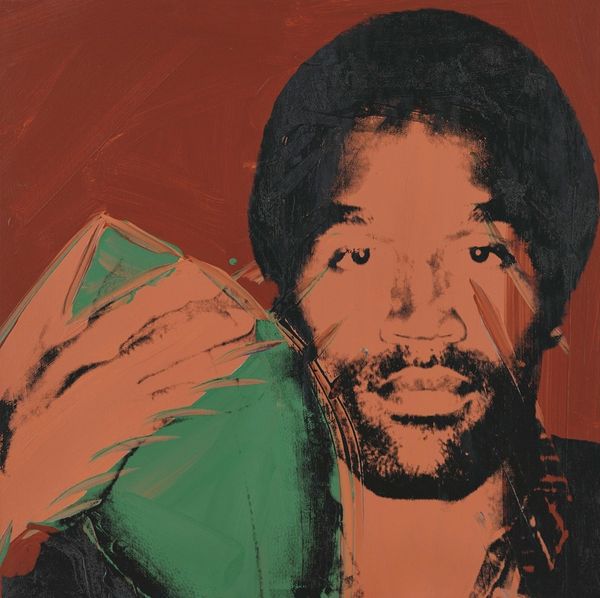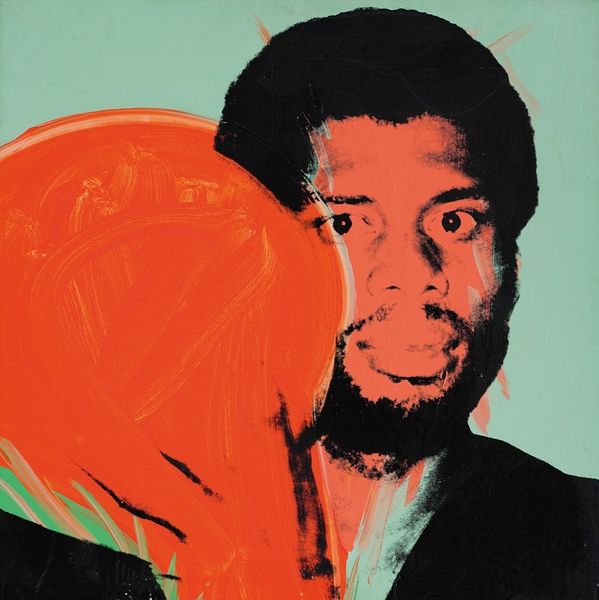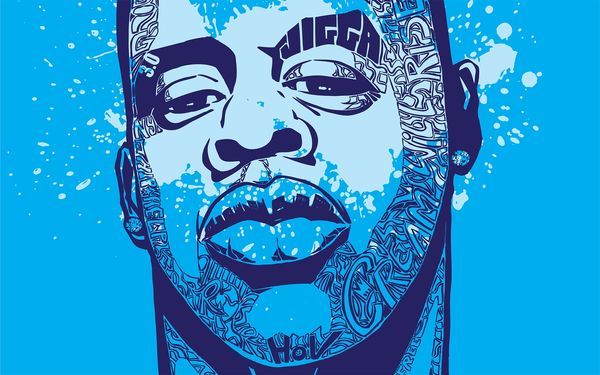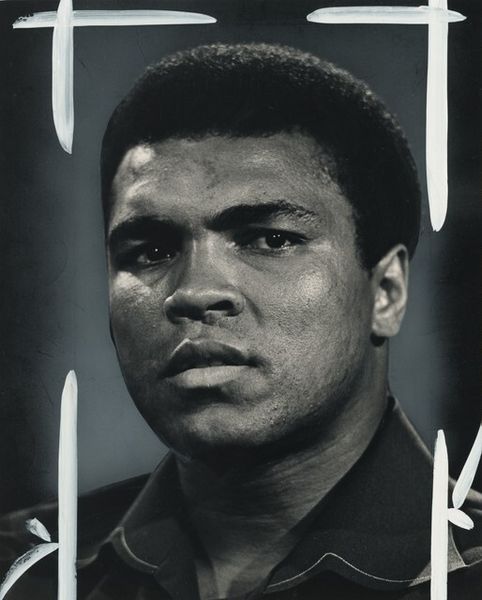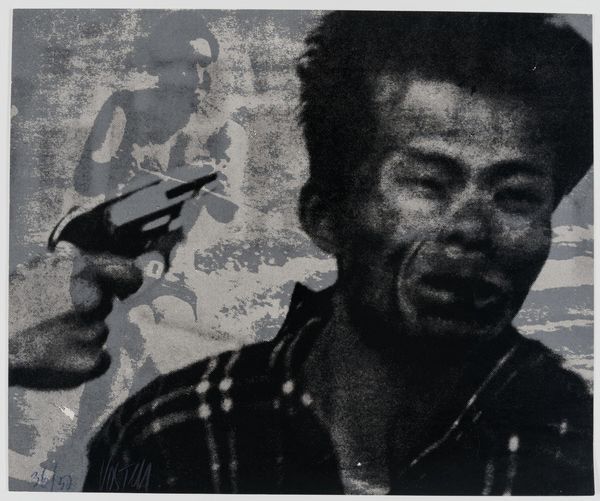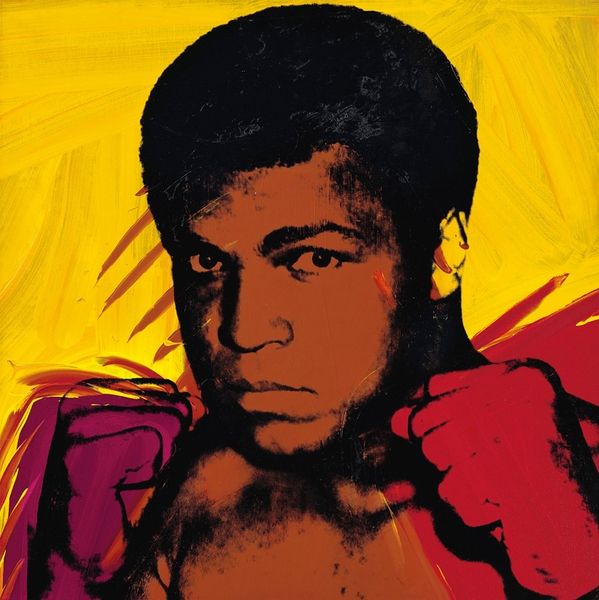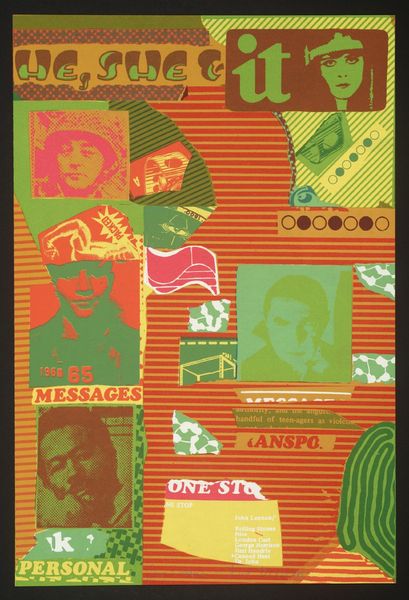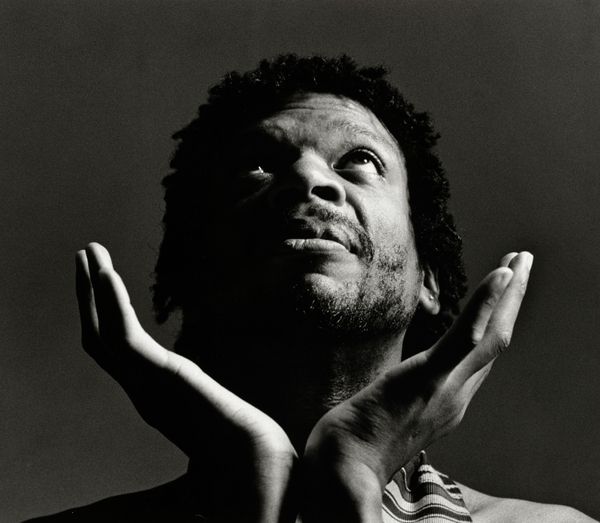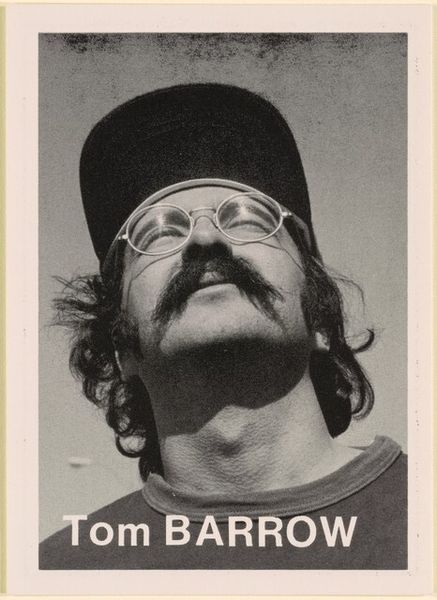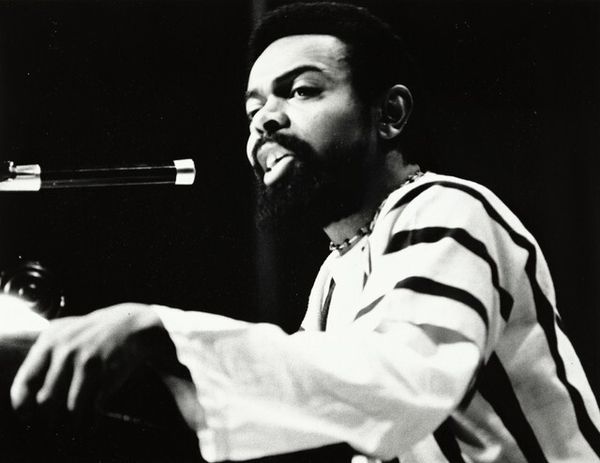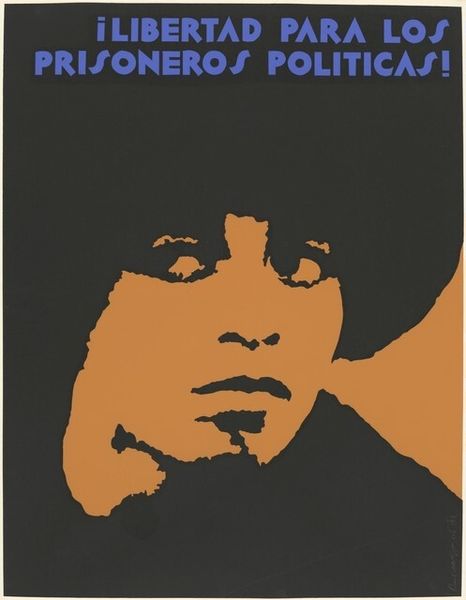
You Can Jail a Revolutionary, But You Can’t Jail a Revolution 1969 - 1970
0:00
0:00
graphic-art, mixed-media, print, photography, poster
#
portrait
#
graphic-art
#
mixed-media
#
portrait
# print
#
activist-art
#
appropriation
#
social-realism
#
photography
#
black-arts-movement
#
poster
Dimensions: image: 54.6 × 41.9 cm (21 1/2 × 16 1/2 in.) sheet: 58.4 × 44.4 cm (23 × 17 1/2 in.)
Copyright: National Gallery of Art: CC0 1.0
Curator: This compelling poster, "You Can Jail a Revolutionary, But You Can’t Jail a Revolution," created by Emory Douglas between 1969 and 1970, really grabs your attention, doesn’t it? Editor: It does. I'm immediately struck by the raw energy radiating from this piece. The contrast between the blue and dark hues, the determined portrait of Hampton—it all feels incredibly urgent and visceral. It almost vibrates. Curator: Absolutely. Douglas's use of readily available materials and printing techniques was intentional. It’s not just art; it’s a call to action, designed for mass production and distribution. The layering of photographic images, bold text, and graphic elements speaks to the Black Arts Movement's dedication to accessible, community-based art. It really emphasizes how political messaging gets disseminated at scale through materiality. Editor: Exactly. The choice to depict Fred Hampton, specifically marking his birth and assassination by police, frames the narrative within the violent realities of the Black Panther Party's struggle. Consider the power dynamics at play. Douglas isn’t just creating a poster, he’s constructing a historical counter-narrative within the public sphere, pushing back against mainstream representations. How were these posters used? Where were they displayed? Who were they meant for? Curator: These were plastered everywhere: community centers, protests, even people’s homes. The aim was to foster solidarity and consciousness. Douglas used high-contrast imagery precisely to circumvent limitations in cheap printing methods and be striking in public spaces. Editor: It's interesting how the image appropriates techniques of both propaganda and fine art. By using widely accessible forms of distribution it bypasses gallery settings and redefines who gets to engage with politically-charged art, challenging art world norms from the inside and out. Curator: Definitely. Douglas mastered making tools for liberation in visual form. This poster isn't just aesthetically striking; it's a document of resistance, produced within a specific social and political crucible. Editor: And the poster remains vital, prompting reflections about power, social change, and how artwork can be utilized as evidence, advocacy, and a monument.
Comments
No comments
Be the first to comment and join the conversation on the ultimate creative platform.
